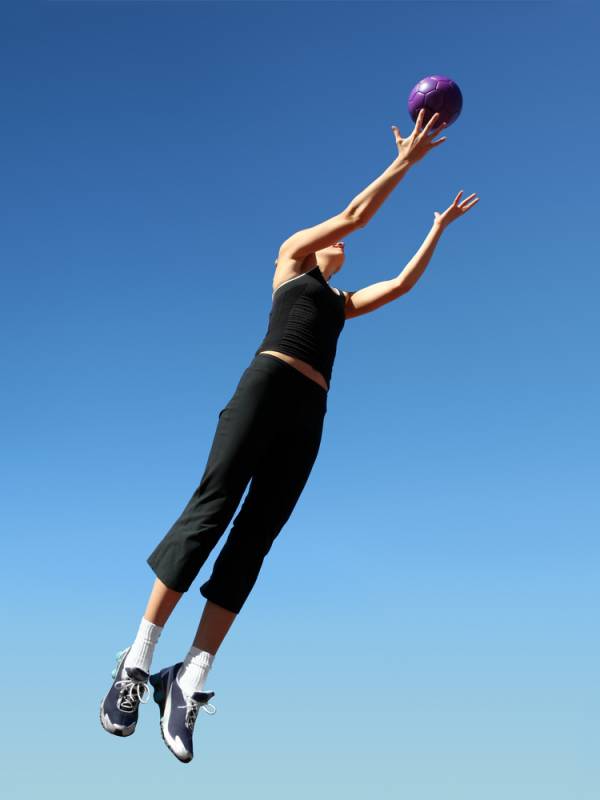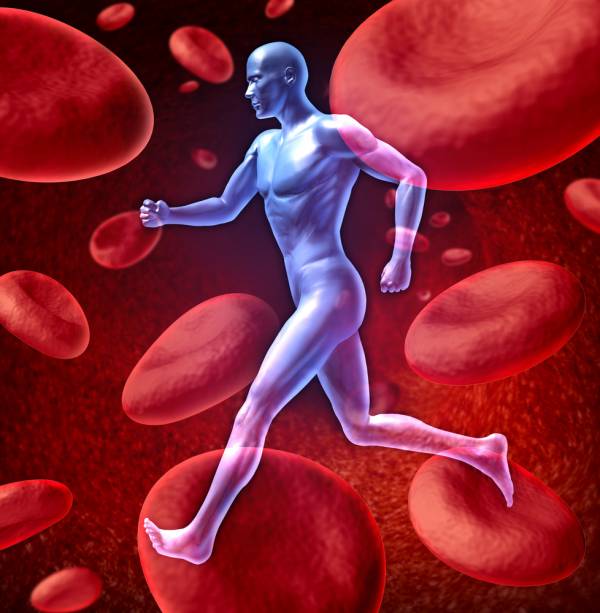Human bioenergetics is an interesting topic. However, energy systems function is understood by few and/or can be confusing to many. Open a quality exercise physiology text and it can leave you saying “huh?” when reading about aerobic, anaerobic, and immediate energy metabolism. It can get even worse when sifting through all the biochemical processes.
Human bioenergetics is an interesting topic. However, energy systems function is understood by few and/or can be confusing to many. Open a quality exercise physiology text and it can leave you saying “huh?” when reading about aerobic, anaerobic, and immediate energy metabolism. It can get even worse when sifting through all the biochemical processes.
Is it important to be able to explain the chemical breakdown of the oxidative Krebs cycle or anaerobic glycolysis if you’re a coach or an athlete in training? Not really. However, knowing the basics of how we generate energy can be helpful in understanding how we fatigue and what training measures can be used to minimize it. Let’s get going as simply as possible. I will do my best, but some “high-tech” discussion is necessary.
The first thing to remember is that ANY muscle contraction/force exertion is due to a molecule called adenosine triphosphate (ATP). When an ATP molecule is combined with water the last of three phosphate groups splits apart and produces energy.
This breakdown of ATP for muscle contraction results in adenosine diphosphate (ADP). The limited stores of ATP must be replenished for work to continue; so chemical reactions add a phosphate group back to ADP to make ATP.
How ATP Is Produced
Take three different activities and put them on a continuum. On one end would be a quick, explosive burst such as throwing a punch. On the other end would be an extended, lower-level event such as walking five miles.
Between the two could be anything: an intense twenty-second activity, one minute of constant force exertion, or a five-minute event with varied intensities of effort.
As you can see, there are many expressions of energy output depending on the amount of force required and the length of the activity.
What then, is the energy source for activities that fall on the continuum at various points? This is the essence of bioenergetics – so many possibilities and so many factors involved.
The Three Energy Systems
Conventionally, there are three energy systems that produce ATP: ATP-PC (high power, short duration), glycolytic (moderate power/short duration), and oxidative (low power/long duration).
All are available and “turn on” at the outset of any activity. What dictates which one (or two) is relied upon the most is the effort required.

Take home point: ATP must be present for muscles to contract. It can be produced via the ATP-PC system, the glycolytic system, or the oxidative system. If depleted, it must be replenished if further muscle contraction is to continue.
Perform an explosive, one-time movement such as a standing long jump or vertical jump and you exert maximal effort, but guess what? You will not become fatigued from this single exertion.
However, jump multiple times and eventually you will become fatigued. Going all-out for as long as possible will deplete immediate ATP stores, then glycolytic stores.
Continuing effort must be fueled by the oxidative system at a lower intensity, all other factors being equal. The most pure aerobic activity that exists is sleeping or lying comatose.
The ATP-PC Energy System – High Power/Short Duration
ATP and phosphocreatine (PC) compose the ATP-PC system, also sometimes called the Phosphogen system. It is immediate and functions without oxygen.
It allows for up to approximately 12 seconds (+ or -) of maximum effort. During the first few seconds of any activity, stored ATP supplies the energy. For a few more seconds beyond that, PC cushions the decline of ATP until there is a shift to another energy system.It is estimated the ATP-PC system can create energy at approximately 36 calories minute.
Examples: a short sprint, lifting a heavy resistance for three repetitions, or pitching a baseball.
The Glycolytic System – Moderate Power/Moderate Duration
Now it becomes more complicated as energy demands shift to this system. The glycolytic system is the “next in line” tool after the ATP-PC system runs its course.
Dietary carbohydrates supply glucose that circulates in the blood or is stored as glycogen in the muscles and the liver. Blood glucose and/or or stored glycogen is broken down to create ATP through the process of glycolysis.
Like the ATP-PC system, oxygen is not required for the actual process of glycolysis (but it does play a role with the byproduct of glycolysis: pyruvic acid). It is estimated glycolysis can create energy at approximately 16 calories per minute.

Here is where it gets interesting. After maximum power declines around 12 seconds, further intense activity up to approximately 30 seconds results in lactic acid accumulation, a decrease in power, and consequent muscle fatigue.
This high, extended effort is labeled “fast” glycolysis. Exerting further effort up to approximately 50 seconds results in another drop in power due to the shift in dependence on the oxidative system. Bottom line: it is getting tougher.
Example: think of an all-out sprint, to a slower jog, to an eventual walk. That is the progression of the three energy systems when going all-out.
Enter “slow” glycolysis into the discussion (warning: more science jargon ahead, but hang in there). Recall the byproduct of glycolysis is pyruvic acid. In fast glycolysis, more power can be generated, but pyruvic acid is converted to lactic acid and fatigue ensues quickly.
Slow glycolysis is different. Relatively less power is generated, but pyruvic acid is converted to acetyl coenzyme A (acA), fed through the oxidative Krebs cycle, more ATP is produced, and fatigued is delayed.
Thus, extreme fatigue can be avoided (but relatively less-intense effort can continue to be expressed) in slow glycolysis as compared to fast glycolysis.
Examples: any moderately-long runs such as 200-400 yards, a 1:30 effort of all-out MMA maneuvers, or a one-minute full-court press – offense display – and another full-court press effort in basketball.
The Oxidative System – Low Power/Long Duration
Your maximal effort was fueled initially by the ATP-PC, but your performance declines. Continued effort results in further decline, either via fast glycolysis (quick decline) or slow glycolysis (slower decline).
You’re now entering the complex world of the low power but longer duration oxidative system, which is estimated to create approximately 10 calories per minute.
Examples: 6-mile run, low-level manual labor on an eight-hour work shift, or a 3-mile walk.
The effort demand is low, but ATP in this system can be produced three ways:
- Krebs cycle
- Electron Transport Chain
- Beta Oxidation.
Let me explain the science, and then I’ll get back to you in plain English.
The Krebs cycle is a sequence of chemical reactions that continues to oxidize the glucose that was initiated during glycolysis. Remember the acA? It enters the Krebs cycle, is broken down in to carbon dioxide and hydrogen, and “poof” two more ATP molecules are formed.

Here is the problem: the hydrogen produced in the Kreb’s cycle and during glycolysis causes the muscle to become too acidic if not tended to. To alleviate this, hydrogen combines with the enzymes NAD and FAD and is sent to the electron transport chain.
Through more chemical reactions in the electron transport chain, hydrogen combines with oxygen, water is produced, and acidity is prevented.
Notice this takes time due to the need of oxygen, which is why the oxidative energy takes a while and intensity of effort declines (i.e., all-out sprinting becomes slow jogging/walking).
The Krebs cycle and the electron transport chain metabolize triglycerides (stored fat) and carbohydrates to produce ATP.
The breakdown of triglycerides is called lipolysis. The byproducts of lipolysis are glycerol and free fatty acids. However, before free fatty acids can enter the Krebs cycle they must enter the process of beta oxidation where a series of chemical reactions downgrades them to acA and hydrogen. The acA now enters the Krebs cycle and fat is metabolized just like carbohydrates.
In Plain English
Due to the time-line, the oxidative system provides energy much more slowly than the other two systems, but has an almost unlimited supply (in your adipose sites – yeah, that stuff you can pinch!).
The oxidative system by itself is used primarily during complete rest and low-intensity activity. It can produce ATP through either fat (fatty acids) or carbohydrate (glucose).
Because fatty acids take more time to breakdown than glucose, more oxygen is needed for complete combustion. If efforts are intense and the cardiovascular system cannot supply oxygen quickly enough, carbohydrate must produce ATP.
However, in very long duration activities (i.e., marathons), carbohydrates can become depleted and the body looks to fat as the energy producer.
A Few Words on Protein
In extended activities protein can be used as a “last resort” for energy production (in rare cases where carbohydrates are depleted and stored fat is minimal).
In such cases, it can supply as much as 18% of total energy requirements. The building blocks of protein – amino acids – can be either converted into glucose (via gluconeogenisis) or other sources used in the Krebs cycle, such as acA. But understand protein cannot supply energy at the same rate as carbohydrates and fats, thus it’s basically a non-issue).
Programming for the Energy Systems
It is estimated that the ATP-PC and glycolytic systems can be improved up to 20% and the oxidative system by a whopping 50% (but in untrained subjects only).
Regardless, sport-specific conditioning plans and optimal nutritional intake need to be implemented. But be aware of the reality of genetics: your unalterable muscle fiber composition plays a huge role.
If you possess predominately slow type I fibers (endurance) or fast type II fibers (strength), you can only do so much. For me, this explains why I never got a sniff of any national-level competitions back in the early 1980s.
Photos courtesy of Shutterstock.






